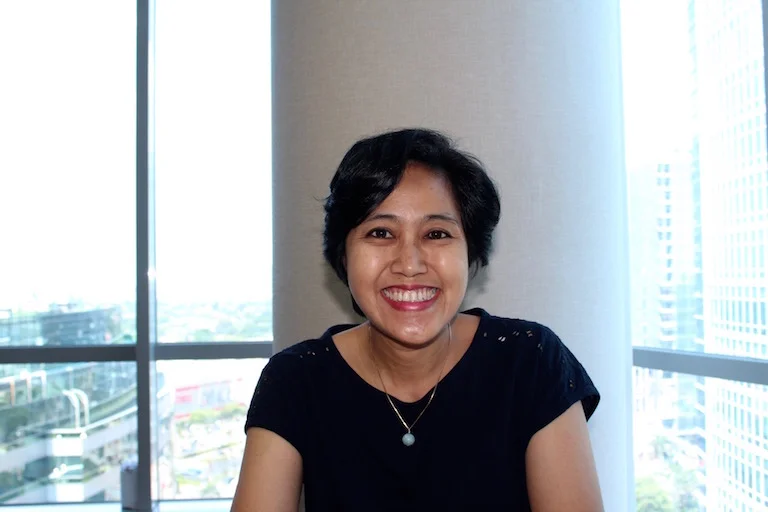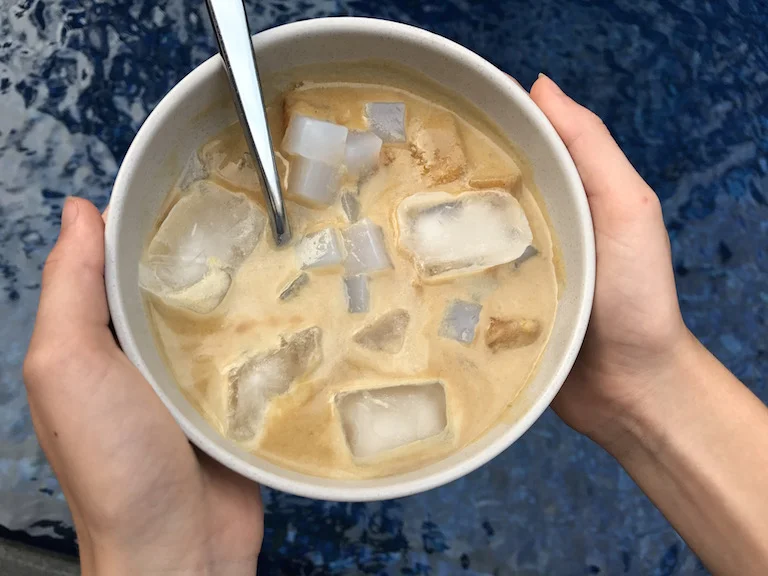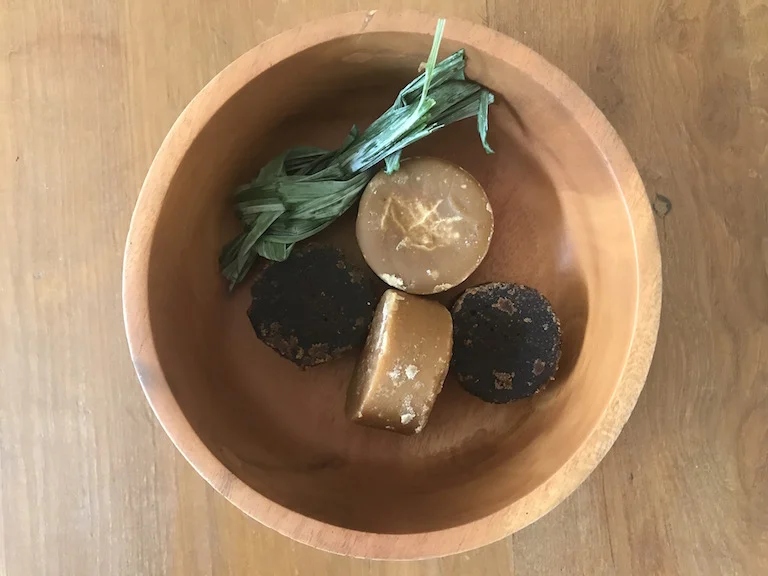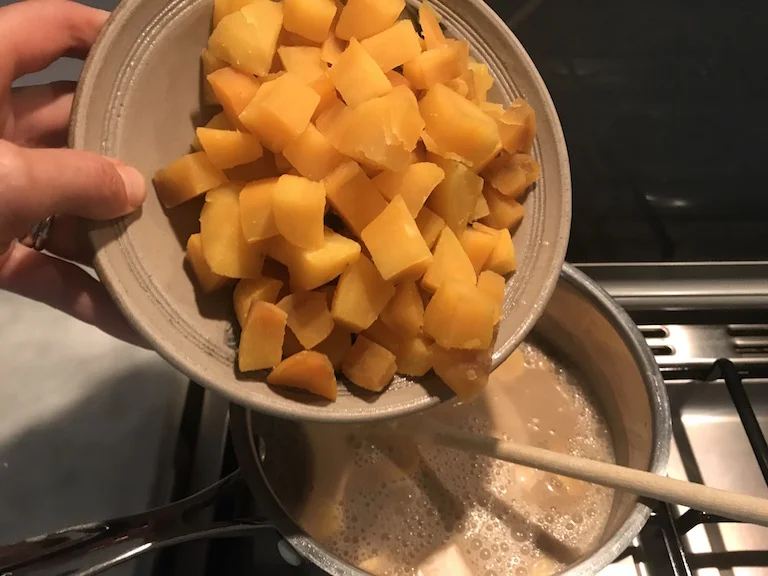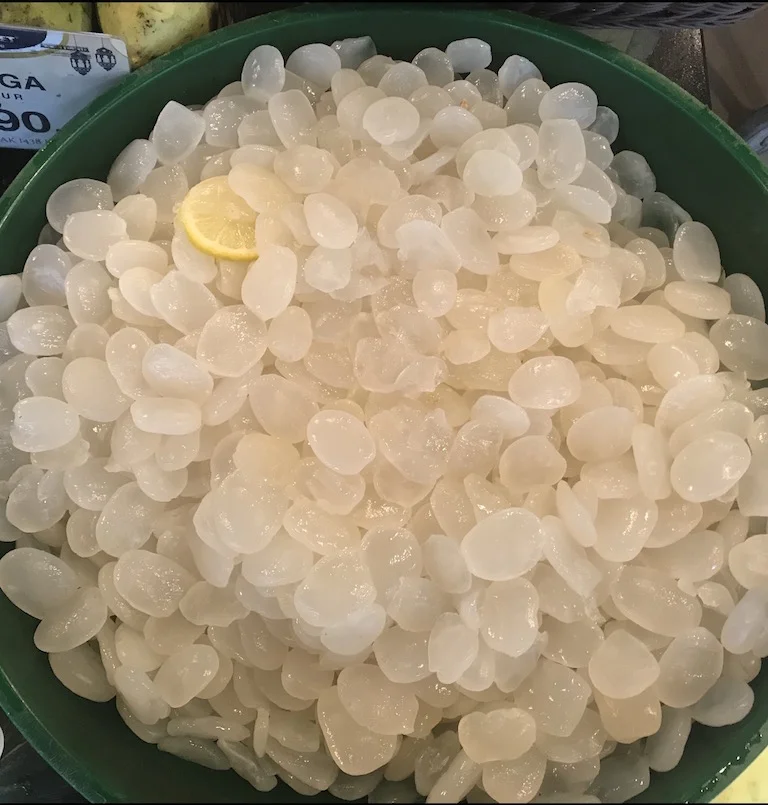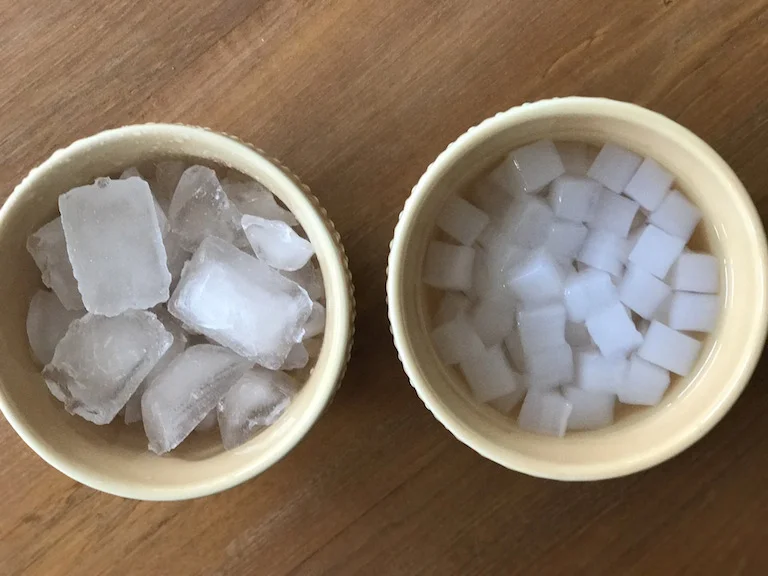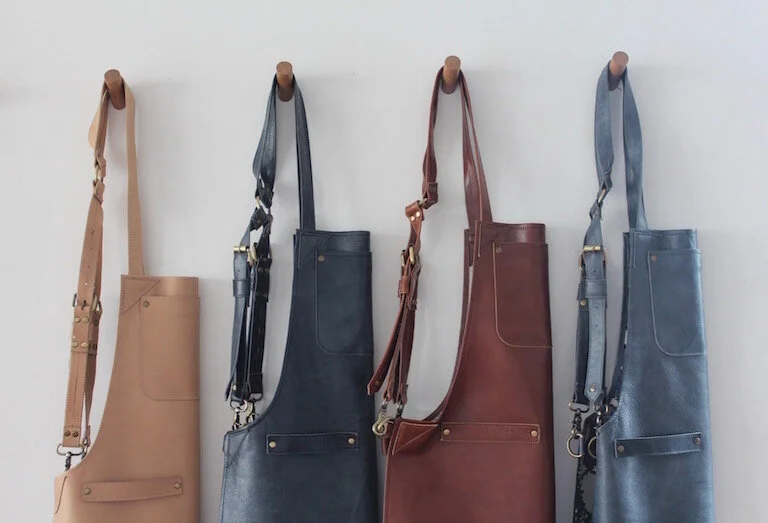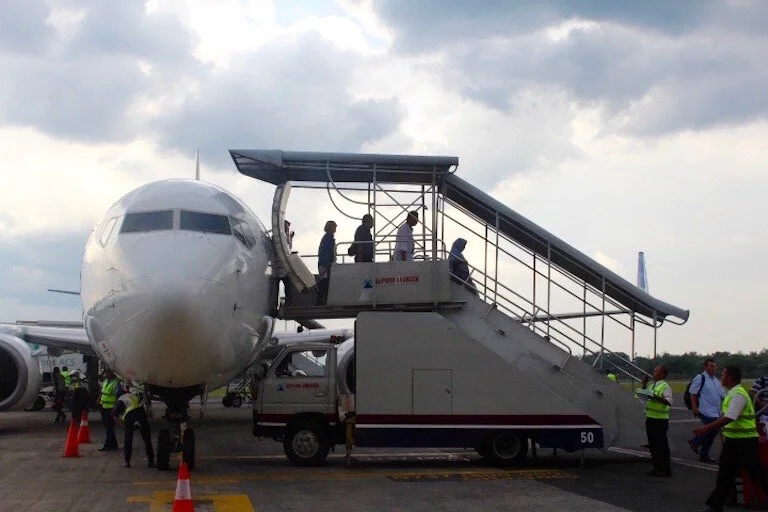Memories and the Meaningfulness of Ramadan
As we draw to the end of the month of Ramadan; a period of time considered most holy on the Islamic calendar, we invite two Muslim friends to share their perspectives on what Ramadan and the ensuing festivities of Eid-ul Fitr mean to them.
Firstly, we introduce you to Ibu Hani, who is most likely familiar to you as we featured Ibu Hani's inspiring life story as one of our original blog posts. Ibu Hani recalls life as a child growing up in the 1950's in West Java and tells of her earliest memories of Ramadan and the celebration of Eid.Our second interview features Ibu Farida Juanita, who likes to be called Ita. Ita was born in Prabumulih, Southern Sumatra and now lives with her husband and two children in Bintaro, West Jakarta. Ita points to her mother as the significant person who guided her, at an early age, in the rituals and traditions associated with Ramadan.
*Kenalkan Ibu Hani Nandana
Ibu Hani (left) and her three cousins gather for Magrib
Where are you originally from?
I was born in Bogor, West Java and remained there for the early stages of my childhood.
At what age did you begin to adhere to the traditions of Ramadan?
In 1952, at the age of 7 years I began fasting for a half day. This meant no water and no food from sunrise until midday. Then, as I grew older, I fasted for the whole day. Interestingly, back then very few women wore head scarves as compared to now. For example, my grandmother only began wearing a head scarf after returning from the pilgrimage to Mecca (the Hajj) as at that time the hijab (or ‘jilbab’) was not yet introduced around Java.
As a child what were your families' Ramadan traditions?
First and foremost, we prayed together. We would do buka pausa (breaking of the fast) together at home. My mother used to prepare all the sweet foods such as kolak (keep reading for our recipe) and sweet drinks like hot sweet tea and kelapa muda (coconut drink) to refresh us and give us renewed energy. Of course we also ate kurma (dates). As dates are rich in vitamins and have a high percentage of sugar, eating them would renew our strength after a day of fasting. Each evening at buka pausa, my father would give us a couple of dates each to signify the opening of the fast. The importance of fasting is significant. By feeling the sensations of hunger and thirst, we can empathise with the suffering of others.
A kolak vendor sets up her stall just before the breaking of the fast, 'Buka Puasa' in South Jakarta (Photograph by Patricia Ferguson)
After buka puasa, we would then do our prayers together known as Magrib. After this we would enjoy our dinner. This was just our daily meal - nothing too fancy. Following on, we would go to the mosque near our house to do Tarawih, which was lead by an elderly person or the Imam.
Another significant focus during Ramadan that both my parents encouraged was maintaining a good attitude. This is in relation to your dealings with others as well as life in general. We were encouraged to think positively about life, and not be critical. Ultimately, we were encouraged to show greater reserve.
Another childhood memory of Ramadan was my parents practice of the tradition of Zakat Fitrah. This involved a certain percentage of their income being given to poor people. Towards the end of Ramadan Zakat was given either directly to the poor, or through the mosque. This is a practice that we continue today.
Even today during Ramadan, you will find signs encouraging people to make donations, 'zakat' to worthy charities. This banner is appealing for funds for an orphanage (rumah yatim)
This year I will spend Eid-ul Fitr at my aunty’s place (my mother’s sister). She is the oldest in the family. She is 94 years old. We will all bring gifts such as cakes, chocolate and food in general. Although this is not a tradition, it has become a common practice. My daughter and grand daughter will be there too. This gathering brings us closer to each other. You appreciate people more.
My Ramadan story by Ibu Ita
Ibu Ita at her workplace in Pondok Indah, in this last week of Ramadan
My full name is Farida Juanita. I'm originally from Solo, Central Java but since my father Pak Subagyo was a policeman, I spent my childhood in many places following my father work assignments.
Ramadan is always a special moment for us as a Muslim. My mum Ibu Sulastri guided us to fast since I was in kindergarten (5 years old), I started with fasting for half a day until we were familiar to fast, then we had to fast for the full day. She told us, one of the spirits of Ramadan is to experience for a time the pain and suffering which millions of people go through everyday without food, water and other basic necessities of life. Fasting bridges the gap between rich and poor, Muslims are encouraged especially during this month to go out and feed the hungry and to spend their wealth on good causes, such as building schools, hospitals, give to charity, to the needy and so on.
In the Islamic tradition, God promises to return all acts of goodness and generosity in this blessed month by ten-times, both in this world and in the hereafter.
Mum taught me that during Ramadan, we should also spend more time with our family especially for iftar (buka puasa) and I make this as a tradition as well in my family. I always try to get home before Iftar from the office, so I can prepare Iftar for my family, unfortunately, I often break my fast on my way home due to traffic :) but at least I try :) Luckily, my daughter can help me to prepare this.
My old time favourite was Es Teler made by my mum. It's like a cocktail, consisting of coconut water, jackfruit, avocado, sea weed, then mixed with milk plus sugar. It was so fresh and delicious, after I moved out I also made this for my kids and they love it as well.
For iftar, my family love to have cold drinks such as coconut water, es teler, kolak, green bean porridge mixes with black sticky rice, fruit soup and of course "gorengan" or fried snacks (everyone's favourite), such as fried tofu, tempe (we called it mendoan), banana, corn, carrots and cabbage. You can find these everywhere on the street where people are selling food.
We have Shalat Magrib and then continue with the main course. Then we will have Shalat Isya and Shalat Tarawih.
During Ramadan I usually have breakfasting together with my big family; my father, brothers and sisters, niece, nephew, total would be 30 pax:)
This Ramadan, I feel God blessed me with His biggest mercy, my daughter Difa passed her final exams at senior high school with a good score and was accepted at the University of Indonesia, Psychology Faculty. She also started to spend her time during this holy Ramadan visiting an orphanage house and playing with them. I'm so proud and happy for her.
Ramadan preparations in Jakarta 2017
Some words/terms you may hear during Ramadan
Mengambil air sembahyang - Cleansing/washing ritual that occurs before each prayer time
Saur - The meal after evening meal/time but before the early morning prayer is called saur. This is a very heavy meal to last until the fasting begins again
Buka puasa - The breaking of the fast (at sunset)
Magrib - A time period of prayer during or just after buka puasa
Tarawih - Gathering of people at the mosque, lead by an Imam. This takes place following Magrib
Sembahyang tarawih - The closing prayers during Tarawih
Sembahyang isya - Late evening prayer (generally before midnight)
Sembahyang subuh - Morning prayer prior to the recommencing of fasting
Puasa - Fasting (from sunrise until sunset)
Sembahyang lohor - Prayers that occur in the middle of the day
Sembahyang asar - Prayers that occur late afternoon (around 4pm)
How to make Kolak
What is Kolak?
Kolak is a sweet soup-like Indonesian dessert made with coconut milk, palm sugar and scented with pandan leaves. Popular ingredients in kolak include plantain bananas (either pisang tanduk or pisang kepok), cassava, sweet potato, pumpkin and jackfruit. Kolak can be eaten hot or cold. If served cold, ice cubes are often added along with kolang kaling (the immature fruit of the feather palm). Kolak is widely consumed and is especially popular during the Holy Month of Ramadan, often eaten to break the fast.
The simple ingredients required to make today's kolak recipe
Ingredients
(Makes 6 portions)
1 large plantain banana (pisang tanduk), cut into small pieces
400 grams sweet potato
50 grams coconut sugar (gula java) - shaved
50 grams of palm sugar (gula aren) - shaved
400ml coconut milk
3 cups of fresh water
2 pandan leaves (tied in a knot)
pinch salt
Method
1. Peel and chop sweet potatoes into small cubes. Place in a medium saucepan with two cups of clean water.
Sliced plantain (pisang tanduk variety) and chopped sweet potato.
The pot is ready for boiling.
2. Bring to boil and continue boiling until the sweet potato becomes almost tender, but not too soft. Drain and set aside.
3. Combine sugars, coconut milk and three cups of fresh water in a medium-sized saucepan. Heat until the sugars are completely dissolved.
Palm- and coconut sugars are lower in GI and have a richer flavour. Pandan leaf is often used to flavour sweet dishes in Indonesian cuisine.
Water, coconut milk and sugars
4. Add the sweet potato and banana. Bring to boil, stirring to maintain a smooth consistency.
5. Add pandan leaf and pinch of salt, stir again.
6. Continue simmering until banana and sweet potato are soft (approximately 10 - 15 minutes).
7. Remove pandan leaf and serve straight from the pot if you prefer your kolak hot.
8. To serve cold, bring kolak to room temperature then refrigerate for 2 hours. Add ice cubes and either kolang kaling or nata de coco and serve.
Kolang kaling are the immature fruit of the Aren palm (a type of feather palm). Before using, they need to be boiled in sugar syrup, then added to kolak and chilled.
To make kolak a more refreshing snack, add cubes of ice and nata de coco - Or for a very local touch, add kolang kaling, which you can purchase from your local pasar. (Be sure to prepare it properly first before adding)
Preparing an order of kolak ubi (kolak with sweet potato) - Photograph by Patricia Ferguson
Buka puasa. The staff at Patricia's house really look forward to sharing this moment together (Photograph by Patricia Ferguson)
*Lebaran - The popular name for Eid-ul Fitr in Indonesia. Lebaran is a national holiday throughout the archipelago. Officially, Lebaran lasts for two days on the Indonesian calendar, although people often extend their holiday period by taking paid time off as they ‘pulang kampung’ (return to their home village).
*Kenalkan - let me introduce..
Interested in learning more about Ramadan and Eid-ul Fitr (‘Lebaran’)? Please take the time to read our other related posts:
Ramadan and Eid-ul Fitr in Jakarta
How to make Putri Salju Cookies
In Pictures - Ramadan preparations in Jakarta
Words: Jo and Liz Photography: a journey bespoke, Hani Nandana and Patricia Ferguson






